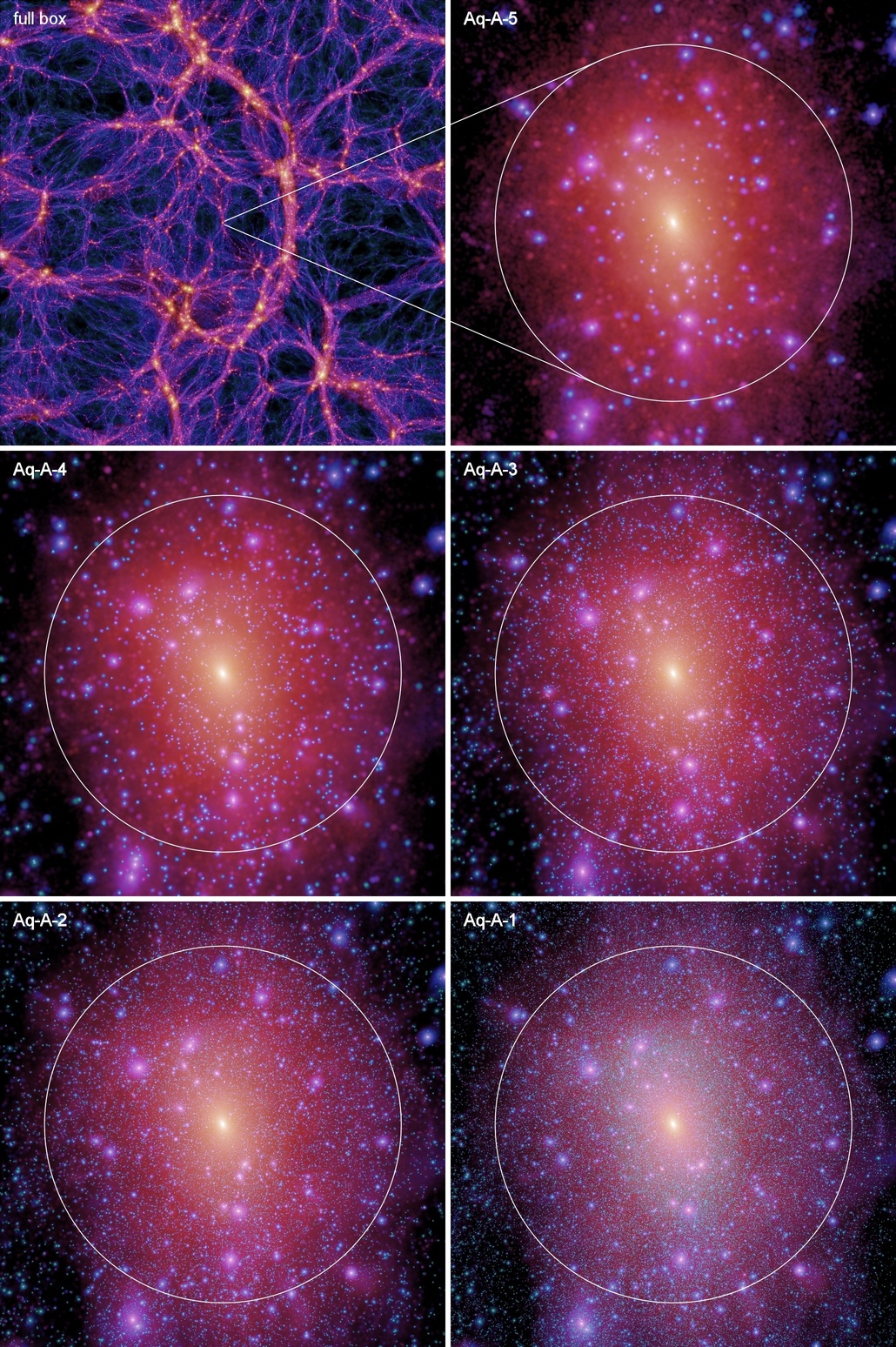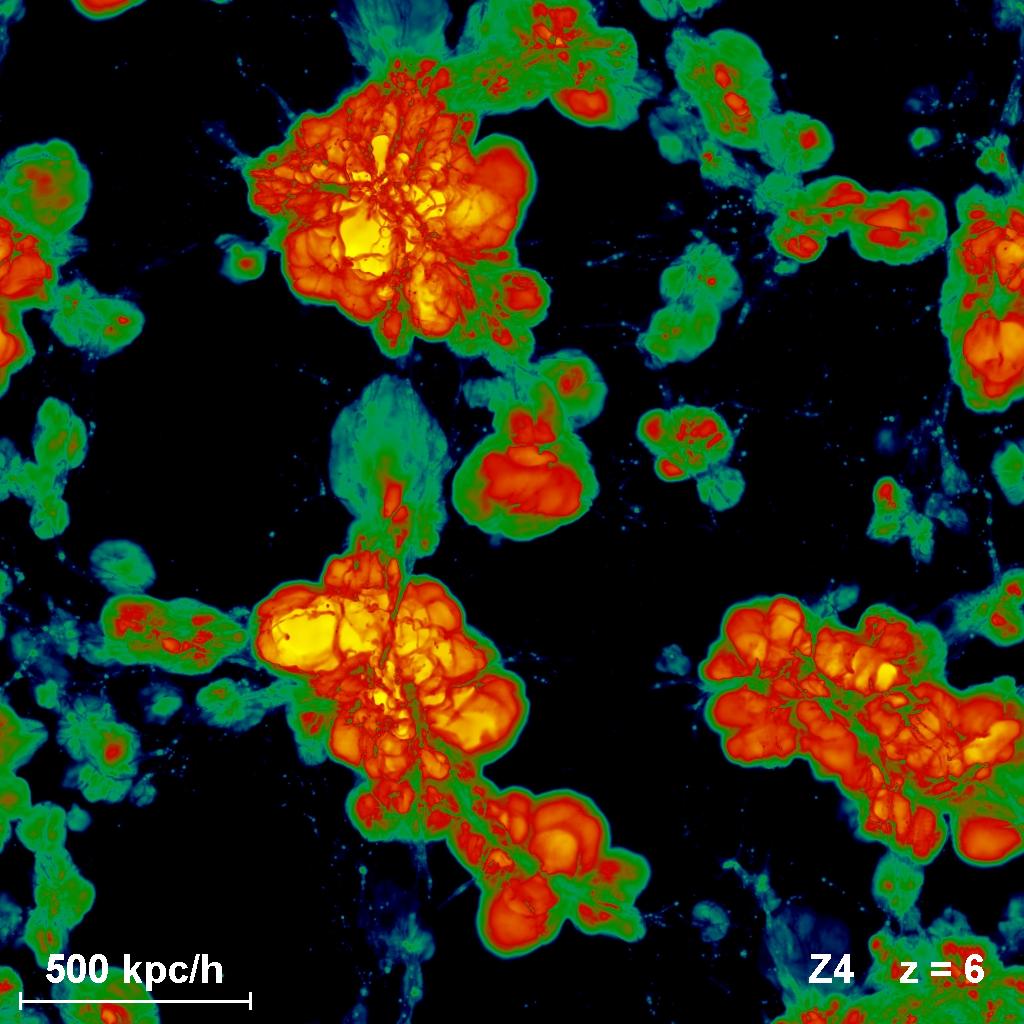
About
Aquarius simulations contains six examples of an isolated halo similar in mass to that of the Milky Way. These are simulated in their full cosmological context (assuming the concordance LCDM cosmology) and at various resolutions up to about 200 million particles (counted within the radius where the enclosed density is 200 times the cosmic mean). One halo is also simulated at even higher resolution, resulting in almost 1.5 billion particles within this radius.
These simulations are being used to understand the fine-scale structure predicted around the Milky Way by the standard structure formation model, and as the basis for simulation by various techniques of the growth of the stellar components of our Galaxy.
Reference
The initial paper for “The Aquarius Project” has been published as Springel et al. 2008. For more information and relevant publications please visit MPA’s project description page or contact Volker Springel.
